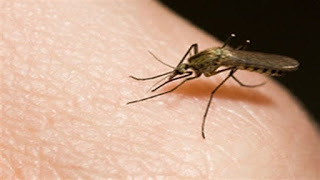A patient presenting with signs and symptoms of cerebral malaria…

A 41-yr-old bird-watcher goes on a beach holiday in Gambia. She takes no malaria prophylaxis. On return to the UK she develops high fevers and self-medicates at home with Lemsip® ( a cough & cold medicine that contains paracetamol & phenylephrine).
On presentation to hospital, she had a fever of 40°C and looked markedly unwell, with a pulse of 130 bpm and BP 90/50 mmHg. She was commenced on IV ceftriaxone and quinine in casualty. Despite this, she deteriorated rapidly, and after 2 hours is found to have a GCS of 3.
Her blood film is reported as showing trophozoites and schizonts of Plasmodium falciparum with a parasitaemia of 20%.
Which of the following is most important as the next step in the management of this patient, once her airway, breathing and circulation have been stabilized?
A. Urgent CT brain scan
B. Blood glucose testing
C. U&E laboratory testing
D. Commence a phenytoin infusion
E. Start chloroquine
Answer:
B-- Blood glucose testing
Discussion: This patient either has cerebral malaria or hypoglycaemia, which may well have been
exacerbated by the quinine (it stimulates insulin release) as well as the malaria parasites (they metabolise glucose). Although intubation may be indicated, she may recover her Glasgow Coma Score (GCS) rapidly with a dextrose infusion.
Anticonvulsant medication may be given to prevent seizures in patients with severe malaria. Rehydration is important, but it should be carried out with a degree of caution in those with malaria because of the risk of precipitating ARDS (acute respiratory distress syndrome). Inotropic support may be required.